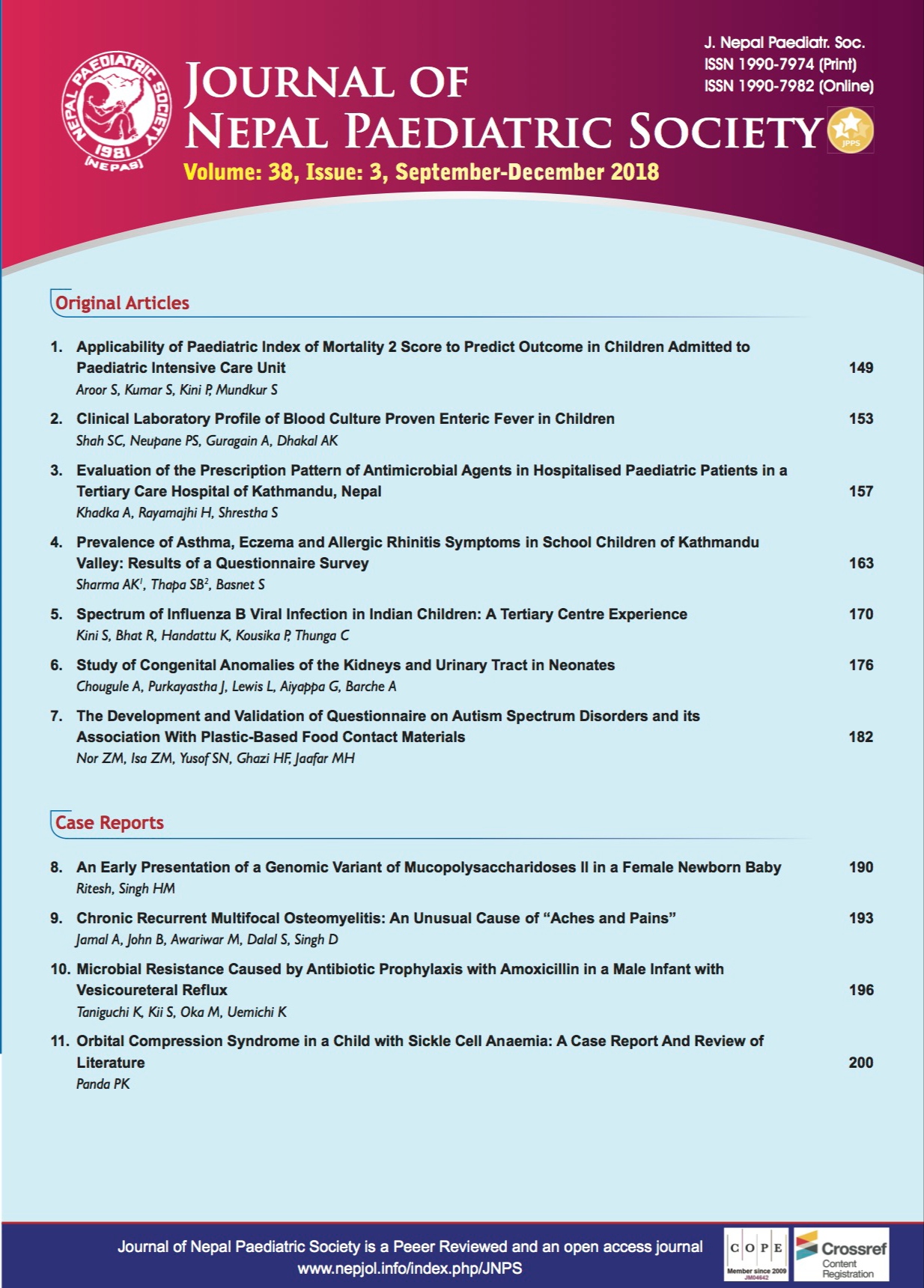Spectrum of Influenza B Viral Infection in Indian Children: A Tertiary Centre Experience
DOI:
https://doi.org/10.3126/jnps.v38i3.23119Keywords:
children, Influenza B virus, pneumonia, RT-PCR, oseltamivirAbstract
Introduction: Influenza viral infection in children can range from subclinical illness to multi system involvement. The morbidity associated with influenza B viral infection is often overlooked. India being the second most populous country, accounts for 20% of global childhood deaths from respiratory infections. There is paucity of data on the clinical features and complications of influenza B viral infections in children from the Indian subcontinent. Our objective was to study the clinical profile, seasonality, complications and outcome associated with Influenza B viral infection in children < 18 years of age.
Material and Methods: We conducted a retrospective observational study at a tertiary care hospital in South India. Children less than 18 years of age admitted to our paediatric unit were included in the study. We reviewed the case sheets of 56 patients who tested positive for influenza B virus during the study period and recorded their clinical and laboratory data. Throat swab obtained from cases were tested by RT-PCR. The illness was classified as upper respiratory tract infection, pneumonia and severe pneumonia. Outcome measures analysed were- mortality, need for oxygen supplementation or assisted ventilation, duration of oxygen support, duration of ICU/ hospital stay and time for defervescence following initiation of oseltamivir therapy.
Results: The mean age of the study population was 6.98 years. Majority of the affected children were > 5 years of age in the school going category with a male to female ratio of 3:2. The diagnosis based on clinical and radiological findings included upper respiratory tract infection (URTI) in 44 (78.5%) cases followed by pneumonia in 11(19.6%) and severe pneumonia in one (1.7%) child. The peak incidence was in the month of March. Malnutrition was the most common risk factor affecting 22 (39.3%) cases followed by history of asthma in eight (14.3%). Three children required oxygen supplementation at admission. The median duration of hospital stay was seven days. The median duration for defervescence following initiation of oseltamivir therapy was 24 hours. Mortality was recorded in one infant who died of acute respiratory distress syndrome.
Conclusions: Influenza B virus should be screened in all children having underlying high risk medical condition, presenting with pneumonia or upper respiratory tract infection. Oseltamivir therapy should be initiated early in the management of influenza B viral infections to prevent complications.
Downloads
Downloads
Published
How to Cite
Issue
Section
License
Authors who publish with this journal agree to the following terms:
Authors retain copyright and grant the journal right of first publication with the work simultaneously licensed under a Creative Commons Attribution License that allows others to share the work with an acknowledgement of the work's authorship and initial publication in this journal.
Authors are able to enter into separate, additional contractual arrangements for the non-exclusive distribution of the journal's published version of the work (e.g., post it to an institutional repository or publish it in a book), with an acknowledgement of its initial publication in this journal.
Authors are permitted and encouraged to post their work online (e.g., in institutional repositories or on their website) prior to and during the submission process, as it can lead to productive exchanges, as well as earlier and greater citation of published work (See The Effect of Open Access).



